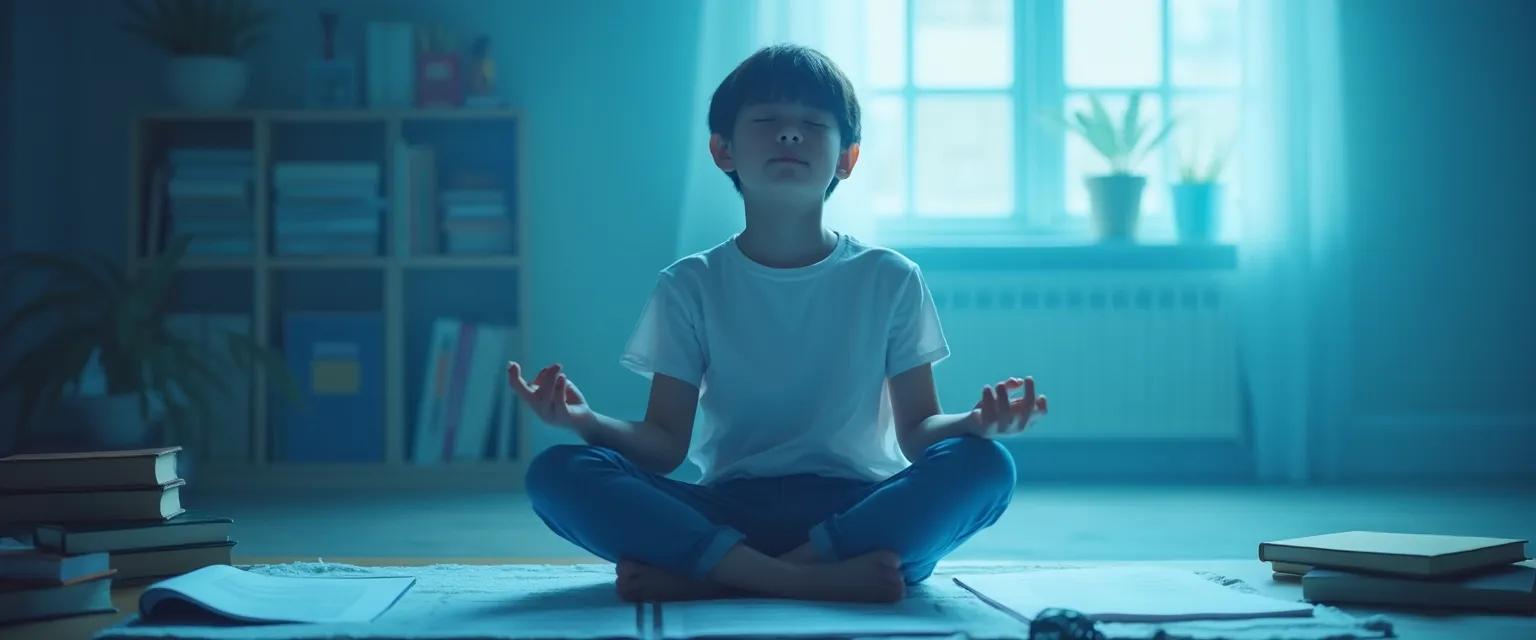3 Minute Mindfulness for Teens: Quick Techniques to Calm Pre-Test Anxiety
That familiar flutter in your stomach before a big test isn't just in your head—it's your body's natural response to academic pressure. For teens navigating the high-stakes world of exams, learning effective 3 minute mindfulness techniques can be a game-changer. These quick practices aren't just trendy relaxation tricks; they're science-backed methods that help your brain shift from panic mode to focused performance mode—all in the time it takes to sharpen a pencil.
The beauty of 3 minute mindfulness lies in its accessibility. You don't need special equipment, a quiet meditation room, or even much experience. Just three minutes of intentional focus can activate your parasympathetic nervous system, reducing the anxiety response that often sabotages test performance. Research shows that teenagers who practice these quick mindfulness techniques experience improved concentration, better memory recall, and reduced test anxiety.
Let's explore three powerful 3 minute mindfulness approaches specifically designed for the unique challenges of test day. These techniques are subtle enough to use in a classroom without drawing attention, yet effective enough to transform your testing experience.
3 Minute Mindfulness Breathing Techniques for Test Day Calm
When test anxiety strikes, your breathing pattern is the first thing to change—and the easiest to control. Mastering 3 minute mindfulness breathing gives you an instant reset button for your nervous system. The box breathing technique is particularly effective because it works with your body's natural rhythms to induce calm.
Here's how to practice box breathing as a 3 minute mindfulness exercise:
- Inhale quietly through your nose for 4 seconds
- Hold your breath for 4 seconds
- Exhale completely through your mouth for 4 seconds
- Hold the empty breath for 4 seconds
- Repeat for approximately 3 minutes (about 11-12 cycles)
For a more discreet option, try belly breathing. Place one hand lightly on your stomach while sitting at your desk. As you breathe in, feel your belly expand; as you exhale, feel it contract. This 3 minute mindfulness technique activates your body's relaxation response, lowering cortisol levels that interfere with clear thinking.
You'll know these techniques are working when you notice your shoulders dropping, your jaw relaxing, and your thoughts becoming clearer—all signs that your body is shifting from "fight-or-flight" to "rest-and-test" mode.
Visualization in 3 Minute Mindfulness Sessions for Test Success
Visualization harnesses your brain's inability to fully distinguish between vividly imagined experiences and real ones. A strategic 3 minute mindfulness visualization before your test can prime your brain for success.
Try this quick visualization technique:
Close your eyes briefly (or simply lower your gaze to your desk). Picture yourself calmly taking the test, knowing the answers, and working through questions with confidence. Imagine the sensation of your pencil moving smoothly across the paper, the feeling of recognition when you see familiar concepts, and the satisfaction of completing each section.
The key to effective 3 minute mindfulness visualization is engaging multiple senses. Feel the weight of the pencil, hear the subtle sounds of the classroom, notice your calm breathing. This positive mental rehearsal creates neural pathways that support actual performance.
To transition back to the test, take one deep breath and bring your attention to the physical paper in front of you, carrying that sense of capability with you.
Grounding with 3 Minute Mindfulness: Your Pre-Test Secret Weapon
When anxiety takes you out of the present moment, grounding techniques bring you back. The adapted 5-4-3-2-1 technique is a powerful 3 minute mindfulness exercise that works even in a test environment:
- Notice 5 things you can see (your paper, pencil, desk, hands, clock)
- Notice 4 things you can physically feel (feet on floor, clothes on skin, chair supporting you, pencil in hand)
- Notice 3 things you can hear (clock ticking, papers rustling, distant sounds)
- Notice 2 things you can smell (or like to smell)
- Notice 1 thing you can taste (or a taste you enjoy)
For an ultra-discreet version of 3 minute mindfulness grounding, focus on the sensation of your feet firmly planted on the floor while taking several conscious breaths. This physical anchoring tells your brain "I'm safe, I'm here, I can handle this test."
The optimal time to use these 3 minute mindfulness techniques is about five minutes before your test begins and whenever you feel anxiety rising during the exam. With practice, these quick exercises become automatic tools that transform test anxiety into focused energy, proving that sometimes the most powerful academic strategies aren't about studying more—they're about mastering your mindset through effective 3 minute mindfulness.




